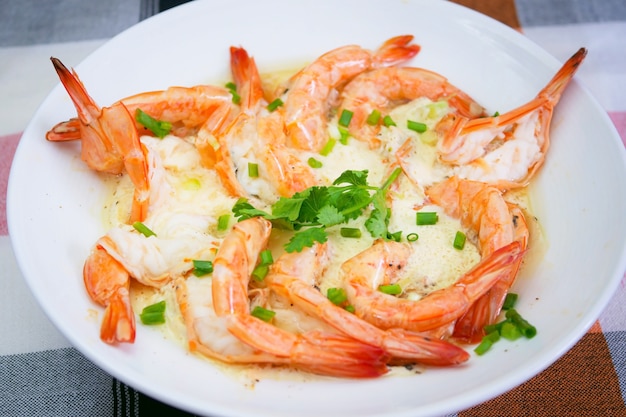Have you heard the myth that babies’ tastes buds aren’t fully developed at 6 months before? I certainly have but it is not totally true. Children can taste even in the belly!
“Limited but consistent evidence indicates that flavors (alcohol, anise, carrot, garlic) originating from the maternal diet during pregnancy can transfer to and flavor amniotic fluid, and fetal flavor exposure increases acceptance of similarly flavored foods when re-exposed during infancy and potentially childhood.” 1
If you find it hard sometimes to feed your little one and you have tagged your child to be picky or fussy, you might be wrong. Around 6 or 7 months old is when your little one can taste salt (no salt should be given to babies under 12 months) but they can tell which tastes are sweet and sour earlier as early as 4-5 months. Please note that we encourage that you begin complementary feeding at 6 months and not earlier with exclusive breastfeeding from birth to 6 months and continued breastfeeding up until 2 years as recommended by WHO.
You can begin taste training from when you are pregnant!
“Many flavors that the mother either ingests or inhales are transmitted to her milk and/or amniotic fluid. Mothers can help the transition from a diet exclusively of milk or formula to a mixed diet by providing the infant familiar flavors in both milk or formula and solid foods. Exposure to a variety of flavors during and between meals appears to facilitate acceptance of novel foods. Providing novelty in the context of a familiar food might prove to be an optimal combination to progressively accustom infants to a diversity of novel foods. When repeatedly exposing infants to flavors of some vegetables that have bitter tastes, mothers should focus not on infants’ facial expressions but on their willingness to eat the food and should continue to provide repeated opportunities to taste the food. Introducing children repeatedly to individual as well as a variety of fruits and vegetables, both within and between meals, might help them be more accepting of fruits and vegetables, which is difficult to enhance beyond toddlerhood.” 2
Taste training has a myriad of benefits:
- It helps you to discover which tastes your child find the most appealing. Some children prefer certain tasting foods over others and this can be traced to the meals the mother enjoyed the most during pregnancy.
- Secondly, exposing kids to a wide range of flavors also helps in the first 1000 days really helps children to appreciate a wide variety of foods. From Cinnamony tastes to fishy flavors; we at Baby Grubz, we boast of a wide range of Authentic African tasting meals and cereals that are safely and hygienically produced for babies. Exploring different tastes might be the secret to unlocking your child’s love for food. I have to say here that naturally (and obviously) we all love sweet tastes and dislike bitter tasting foods however , there are so many other tastes like that you need to know and intentionally explore. I would advice that you approach weaning with the aim to deliberately help your little one taste as many distinct foods as much as possible and not to clear their plates. Our role as parents is to expose them to these flavors but the children decide how much of it they eat. As your little one grows older, you should also introduce variety of food textures, mashy, chunky, sticky etc.
- Third reason why I love taste training is the freedom to choose from endless food options to offer your little humans. It becomes easier to travel with your little ones and they get to experience travel with you through food.
There are five basic tastes:
- Sour
- Sweet
- Bitter
- Salty
- Umami.
The trick is to target the different taste receptors on their taste buds.
Babies are born with
1. Sour – Tamarind, Lemon

While citric acid may be too harsh for your little ones stomach, a little bit of lemon can help increase absorption of iron in their meals. See a recipe below of how to safely introduce some mild tart taste to your baby.
1.1 Lemon Fish and Vegetable Recipe
This is suitable from 7-8 months upwards and can be stored frozen for up to 3 months.
Ingredient:
1 medium fish cut (fillet or deboned)
2-3 Ugwu (Nigerian pumpkin) leaves
1 teaspoon lemon juice or tamarind juice
2 tablespoons GRUBZ Sweet Rice
Method:
Steam Fish and Ugwu till cooked
Dissolve Grubz Sweet Rice with hot water
Pour into a food processor with steamed fish and ugwu leaves
Cool and serve warm
You can freeze for later consumption
2. Salty – Shrimps, Eggs, Milk

Salt is definitely bad for your little one.
You should avoid putting salt in your little one’s meals until after their first birthday. Salt is bad in baby food because your little one’s kidneys have not fully developed to
However, sodium occurs naturally in some foods such as seafood, eggs, meat, celery etc
See two recipes below that show you how to safely introduce some mild natural salty taste to your baby.
Banana Egg yolk Baby Puree
This is suitable from 6-7 months upwards and may also be added to Grubz Sweet Potatoes with Basil Meal
Ingredient:
1 banana fingers
1 hard boiled egg yolk
Milk to the desired consistency (you can use expressed breast milk)
Method:
Add all ingredients into the food processor
Blend into a smooth paste
Serve with a spoon to your little one
Seafood (shrimp & Fish) Okra soup for babies
Besides the taste, there is something that attracts babies to ooey gooey taste and texture of Okra soup.
Ingredients:
10 Okra fingers
1 medium sweet green bell pepper
3 tablespoons Palm oil
1 teaspooon Grubz Shrimp Powder
1 teaspoon Grubz Fish Powder
Method:
Chop Okra into smaller chunks
Bring to boil, add palm oil
Next add Grubz Fish and Shrimp powder
Stir altogether, allow to cool and then blend into a smooth paste
Serve warm with Grubz Swallow
3. Sweet – Nuts, sweet potatoes, Bananas, Cinnamon, dates
Don’t we all just love sweet tastes! I always appeal to mothers not to introduce sweet tasting fruits and vegetables as first foods to their little ones; just so that we can avoid constant craving or penchant for sweet tasting foods only.
Baby Grubz Meals
Baby Grubz has several sweet tasting meals which includes:
Grubz Banana and dates cereal
Grubz Grains and Nuts cereal
Sweet Rice Instant cereal.
For homemade options, below are some decadent but healthy meal options that you can try.
Pureed Pear and Dates
I love this combination as it is suitable for 2 things:
A. As a sweetener for other meals
b. It also helps to prevent constipation in little ones
Ingredients:
1 peckham pear
5-8 pitted dates
Method:
Wash pears in salty water and then rinse under running water
Soak for a few hours or overnight in warm water in a covered bowl
Next, steam pears and pour into a food processor
Add dates and the water used to soak the dates
Blend all into a smooth consistency and freeze for subsequent use
4. Bitter – Dark chocolate, bitter leaf
I can already tell that some parents will cringe at this one but not to worry, we can still make it yummy without being overly bitter. However, this meals are recommended for kids above 12 months
Chocolatey Rice
This is a very simple dish. You only need Grubz Sweet rice cereal and dark chocolate.
Ingredients:
Grubz Sweet Rice
Dark chocolate shavings
Method:
Grubz Sweet Rice needs just hot water or hot milk to be ready
Add chocolate shavings according to your desire
Stir into the sweet rice cereal to blend well
Serve warm
5. Umami – Tomatoes, Soybeans, Fish, Mushroom, Sweet Potatoes
Umami or savory taste is very much loved taste in Nigerian meals. Umami always elevates the flavor of meals.
Grubz Sweet Potatoes with Basil and Fish bites
Ingredients:
1 Egg, small
1/4 cup smoked fish, flaked
1 tsp onion, grated
1 tsp Grubz shrimp powder
1 tsp Grubz fish powder
2/3 cup Grubz sweet potatoes
Method:
Wash your hands and utensils
Combine all ingredients & mix
Mould into preferred shapes
Bake for 10 minutes or fry
Serve as finger food
Grubz Sweet Beans & Plantain pottage
Ingredients:
¼ of a medium sized plantain
1 small tomato
2 tablespoons of palm oil
2 tablespoons Grubz Sweet Beans Powder
1 tablespoon Grubz Fish powder
Water to dissolve
Method:
Dice plantains and tomatoes into cubes and boil for 10 minutes
Dissolve Grubz sweet beans powder with water and stir into boiling plantains
Add palm oil and Grubz fish powder, cook for 5 minutes
Thin out pottage if too thick or to desired consistency
Mash or puree (depending on child’s age)
Serve warm
References
- Influence of maternal diet on flavor transfer to amniotic fluid and breast milk and children’s responses: a systematic review.
Spahn JM, Callahan EH, Spill MK, Wong YP, Benjamin-Neelon SE, Birch L, Black MM, Cook JT, Faith MS, Mennella JA, Casavale KO.
Am J Clin Nutr. 2019 Mar 1;109(Suppl_7):1003S-1026S. doi: 10.1093/ajcn/nqy240. PMID: 30982867. - Complementary foods and flavor experiences: setting the foundation.
Mennella JA, Trabulsi JC.
Ann Nutr Metab. 2012;60 Suppl 2(Suppl 2):40-50. doi: 10.1159/000335337. Epub 2012 Apr 27. PMID: 22555188; PMCID: PMC3363345.
